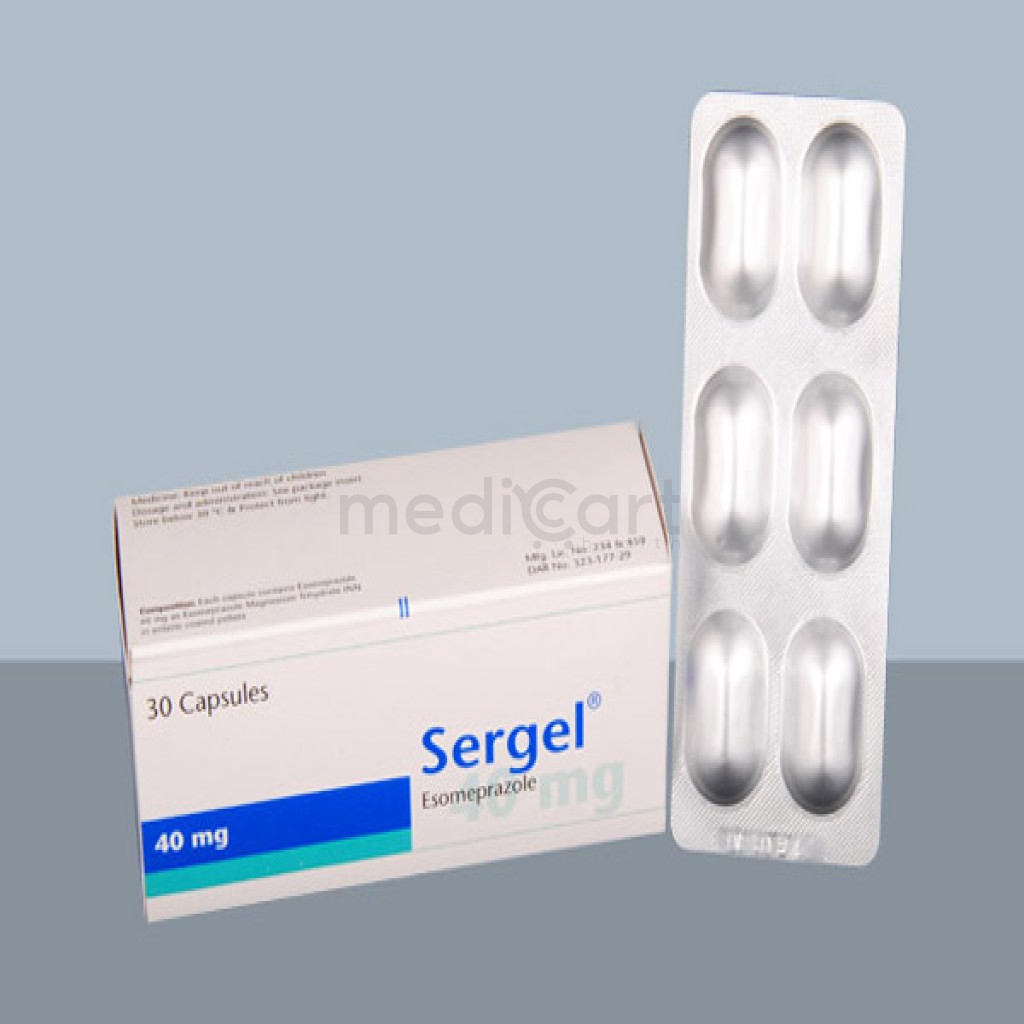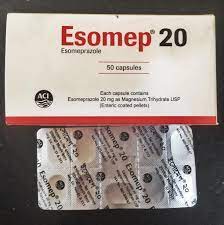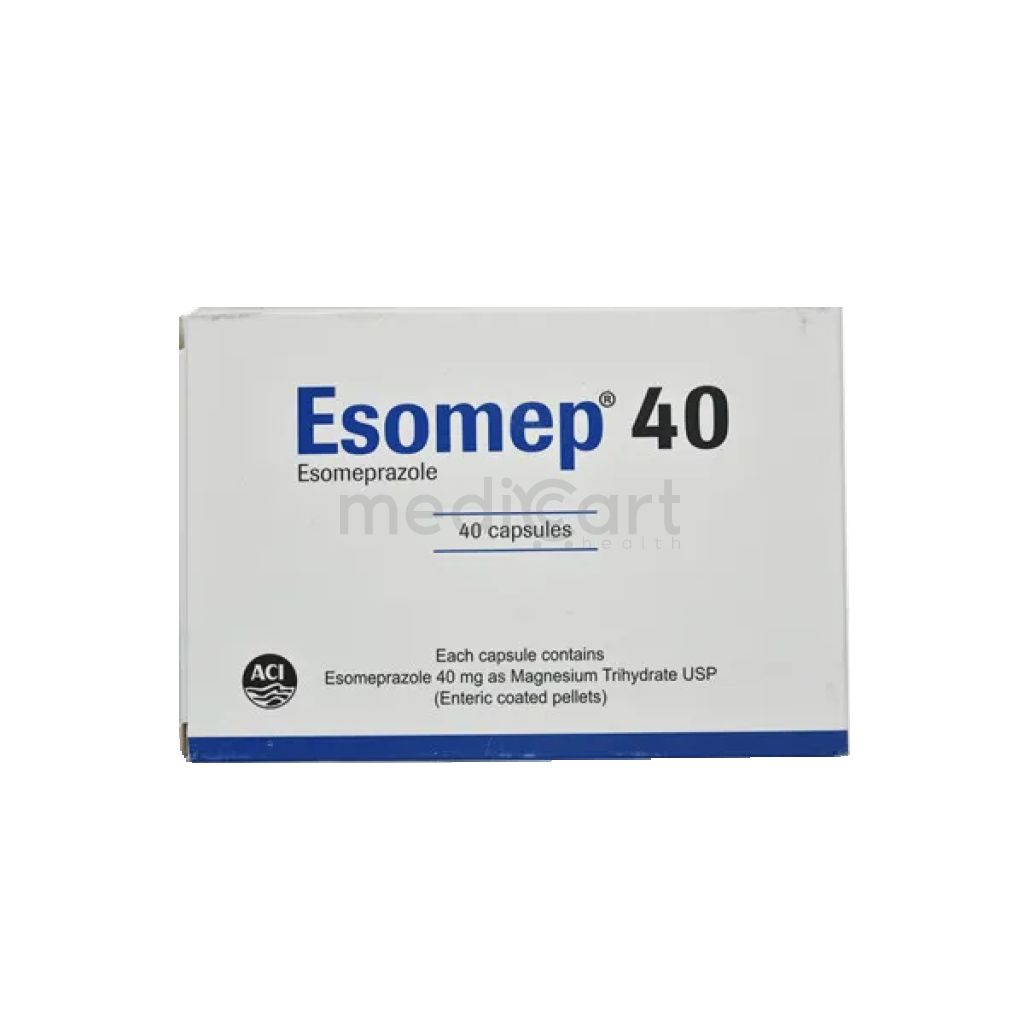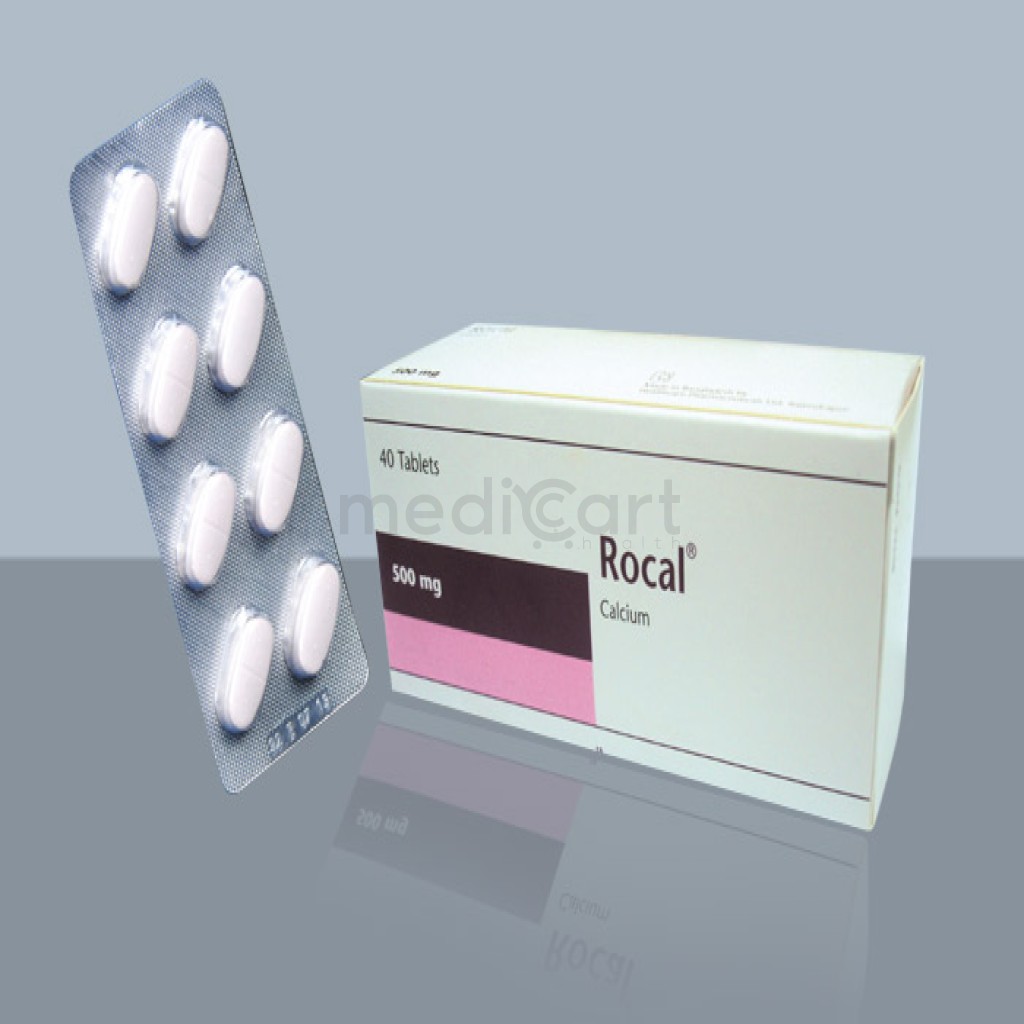

Sergel - 40mg
Capsule* Delivery will be done in Dhaka city only.
More Information About - Sergel - 40mg
Description
Indications
Heartburn, Acid Related Dyspepsia, Peptic ulcer disease, Zollinger-Ellison syndrome, Gastroesophageal reflux disease (GERD), Helicobacter pylori infection, Erosive Esophagitis, Gouty arthritis, Duodenal and Gastric Ulcer.
Pharmacology
Esomeprazole is a proton pump inhibitor that suppresses gastric acid secretion by specific inhibition of the H+/K+ ATPase in the gastric parietal cell. Esomeprazole (S-isomer of omeprazole) is the first single optical isomer of proton pump inhibitor, provides better acid control than racemic proton pump inhibitors.
Dosage
Adult Dose
GERD Without Erosive Esophagitis 20 mg PO qDay for 4 weeks; consider an additional 4 weeks of treatment if symptoms do not resolve completely in the first 4 weeks GERD With Erosive Esophagitis 20-40 mg PO qDay for 4-8 weeks If oral therapy inappropriate or not possible: 20-40 mg qDay IV up to 10 days; switch to PO once patient able to swallow Maintenance: 20 mg PO qDay for up to 6 months Risk Reduction of NSAID-Associated Gastric Ulcer 20-40 mg PO qDay for up to 6 months NSAID-Induced Gastric Ulcer 20 mg PO qDay for 4-8 weeks Zollinger-Ellison Syndrome 80 mg PO divided q12hr (initial); adjust regimen to efficacy; up to 240 mg PO qDay, OR 120 mg PO q12hr administered to patients Elderly: No dosage adjustment needed. Hepatic Impairment Oral administration Mild to moderate (Child-Pugh A/B): No dosage adjustment required Severe (Child-Pugh C): Not to exceed 20 mg/day
Child Dose
GERD Without Erosive Esophagitis Oral <1 year: Safety and efficacy not established 1-12 years: 10-20 mg PO qDay for up to 8 weeks >12 years: 20-40 mg PO qDay for up to 8 weeks GERD With Erosive Esophagitis (Healing) <1 month: Safety and efficacy not established 1 month to 1 year 3.5 kg: 2.5 mg PO qDay for up to 6 weeks >3.5-7.5 kg: 5 mg PO qDay for up to 6 weeks >7.5 kg: 10 mg PO qDay for up to 6 weeks 1-12 years <20 kg: 10 mg PO qDay for 8 weeks >20 kg: 10-20 mg qDay for 8 weeks >12 years 20-40 mg PO qDay for 4-8 weeks Maintenance: 20 mg PO qDay up to 6 months
Administration
Delayed-release cap: Should be taken on an empty stomach. Take on an empty stomach 1 hr before meals. Tab: May be taken with or without food.
Interaction
Esomeprazole appears to be a selective inhibitor of the cytochrome P450 mono-oxygenase system, there may be an effect on hepatic clearance, but there have been no reports to date of clinically relevant interactions. There is some uncertainty over the effect of Esomeprazole on the oral combined contraceptive pill. Physiological changes similar to those found with omeprazole are likely to take place because of the reduction in gastric acid which is likely to influence the bacterial colonization of the stomach and duodenum and also vitamin B12 absorption.
Contraindication
Esomeprazole is contraindicated in those patients who have known hypersensitivity to any other components of the formulation.
Side Effects
10% Headache (2-11%) 1-10% Flatulence (10%),Indigestion (6%),Nausea (6%),Abdominal pain (1-6%),Diarrhea (2-4%),Xerostomia (3-4%),Dizziness (2-3%),Constipation (2-3%),Somnolence (1-2%),Pruritus (1%) <1% Blood and lymphatic system disorders: Agranulocytosis, pancytopenia Blurred vision, GI disorders: Pancreatitis, stomatitis, microscopic colitis Hepatobiliary disorders: Hepatic failure, hepatitis with or without jaundice Anaphylactic reaction/shock GI candidiasis Hypomagnesemia Musculoskeletal disorders: Muscular weakness, myalgia, bone fracture Nervous system disorders: Hepatic encephalopathy, taste disturbance Psychiatric disorders: Aggression, agitation, depression, hallucination Interstitial nephritis Gynecomastia Bronchospasm Skin and subcutaneous tissue disorders: Alopecia, erythema multiforme, hyperhidrosis, photosensitivity, Stevens-Johnson syndrome, toxic epidermal necrolysis (sometimes fatal)
Pregnancy
US FDA pregnancy category of Esomeprazole is C. So, Esomeprazole should be avoided in pregnancy and lactation unless the potential benefits to the other outweigh the possible risks to the fetus.
Precautions & Warnings
Exclude the possibility of malignancy when gastric ulcer is suspected and before treatment for dyspepsia. When used in combination with antibiotics, refer to the prescribing information of the respective antibiotics.
Storage Conditions
Keep in a dry place and away from light and heat. Keep out of the reach of children.
Price Disclaimer
Prices are subject to change without notice (Align with DGDA and Pharmaceutical Company's price change). We reserve the right to modify or cancel any orders.
Disclaimer
The information provided herein are for informational purposes only and not intended to be a substitute for professional medical advice, diagnosis, or treatment. Please note that this information should not be treated as a replacement for physical medical consultation or advice. Great effort has been placed to provide accurate and comprehensive data. However, Medicart along with its authors and editors make no representations or warranties and specifically disclaim all liability for any medical information provided on the site. The absence of any information and/or warning to any drug shall not be considered and assumed as an implied assurance of the Company.










